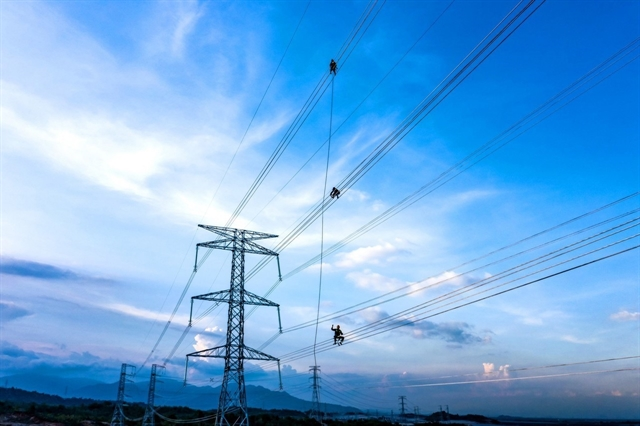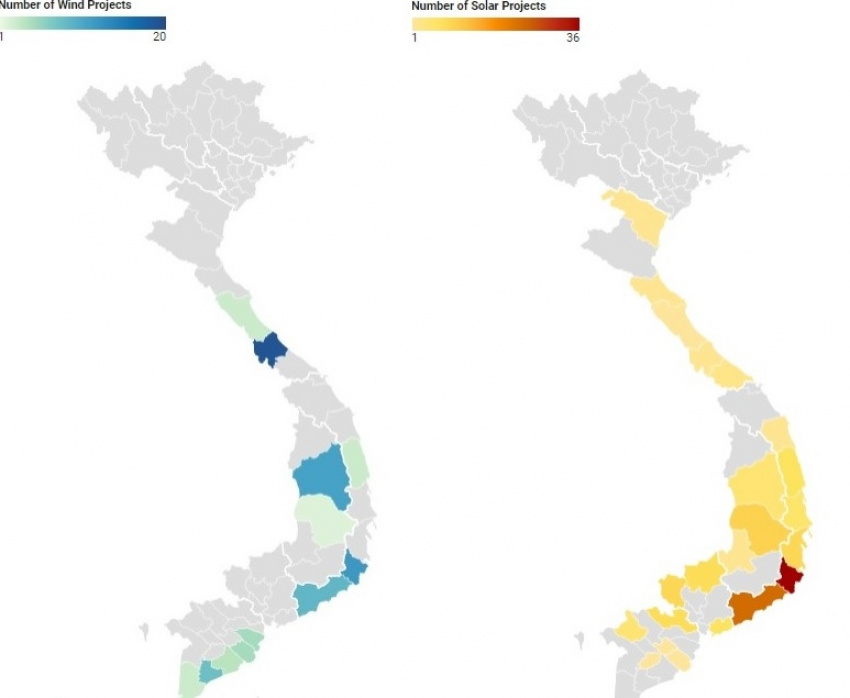Grid integration of renewables
- Vu Than
- Dec 3, 2022
- 4 min read
Vietnam’s has made impressive progress on its renewable energy transition, but the rapid expansion of solar and wind is straining the country’s electricity grid. In 2020, more than 100,000 rooftop solar installations and at least 15 utility-scale solar plants were connected to the grid. In 2021, at least 84 wind power plants came online. Most of these projects are concentrated in Ho Chi Minh City and a few southern provinces, outpacing the ability of the grid to integrate them. Because of this, in 2022 Vietnam’s National Load Dispatch Centre announced a pause on new solar and wind projects. To ensure continued progress toward Vietnam’s renewable energy target of 50% solar and wind by 2045, Electricity Vietnam (EVN) must improve grid planning and investment.

(Photo: Transmission lines are installed to connect renewable energy plants in Bình Thuận Province)
Variable solar and wind power differs from traditional power sources like coal, natural gas, or hydropower in important ways. The latter can produce power on demand, but solar and wind power are intermittent because the sun does not always shine and the wind does not always blow. When only a few power plants produce variable energy and their contribution to overall power supply is low, grid operators can manage variability in the grid without much difficulty. Experts generally divide renewable energy penetration into six phases, and as the grid’s share of renewable energy rises, grid operators need to make increasing adjustments to ensure that the grid operates smoothly.
Vietnam’s deployment of renewable energy has been both rapid and geographically concentrated with the vast majority of solar installed in the south. Solar energy accounts for about 25% of Vietnam’s total installed capacity, but up to 42% of installed capacity in some southern provinces. Wind is also concentrated: half of all of Vietnam’s wind projects are located in Gia Lai, Ninh Thuan, and Quang Tri Provinces.
Chloropleth maps for wind and solar are below:

(Photo: Number of solar and wind projects by province © the Stimson Center)
Viet Nam has moved rapidly from Phase 1 of variable renewable energy integration on the chart above—where renewables represent a small percentage points of total energy supply and have limited impact on the grid—to at least Phase 2 at the national level and in some places to Phase 3, where there is enough renewable energy to impact grid operations and additional investments in grid infrastructure are required.
Like many other countries in developing Asia, Viet Nam has historically underinvested in transmission. Instead, planners have prioritized funding for power generation to meet rapidly rising demand. Vietnam’s planned transmission expenditures in 2021 were about a quarter of what was envisioned in the Power Development Plan, which outlines Vietnam’s future vision for the power system through 2045.
Existing north-south transmission lines are close to capacity: a World Bank study showed that existing transmission could integrate up to 3.3 GW of variable renewable energy in southern Vietnam, but that additional power would require upgrades to transmission lines and transformers. The recent expansion of solar and wind is closer to 20 GW, significantly outpacing the grid’s ability to absorb the new power.
Optional infographic: summary chart showing solar development compared against ability to integrate variable power: https://datawrapper.dwcdn.net/C3Iie/1/
New rules are helping the integration of renewable energy, including requiring grid operators to prioritize the dispatch of solar and wind power. However, several technical and regulatory constraints are holding back progress:
No clear plan to address grid congestion. It takes longer to build transmission lines than to build power stations. Yet a 2020 survey by USAID was unable to identify a clear grid investment plan to integrate variable energy. EVN is therefore stuck reacting to the recent solar and wind boom rather than planning for it. This must be addressed urgently to support the rollout of the 100 GW of new solar and wind power that Viet Nam needs to meet its zero net emission target.
Limited forecasting of variable energy. Viet Nam cannot yet reliably forecast variable renewable energy production, inhibiting its ability to match supply and demand. Better forecasting based on weather and historical power plant operations would ease grid management.
Outdated national grid code. Viet Nam has made some updates to grid regulations but these don’t yet provide the flexibility to accommodate frequent changes in variable energy and lack specific technical requirements for variable energy.
No incentive for other energy sources to complement variable energy. As renewable energy’s share of the electricity supply rises, the grid will benefit from the deployment of ancillary services. These include battery storage and using traditional power sources more flexibly, especially LNG plants that can be quickly ramped up and down to complement solar and wind output. Traditional power purchase agreements (PPAs) do not allow for flexible operation. Adjusting PPA terms and instituting a preferential tariff could incentive battery storage and optimize the use of traditional power sources.
Limited connections with its neighbors. Viet Nam trades electricity with neighbors China, Lao PDR, and Cambodia, but it is still very limited. Improved interconnectivity and increased power trade could allow for spot purchases of electricity from Lao PDR or Cambodia when solar and wind underproduce in Viet Nam, thereby optimizing power supply at the regional level.
To meet its COP26 commitments, Viet Nam needs to urgently address these barriers. The government could take several steps to improve transmission. The first and easiest is to prioritize funding for grid improvements. Viet Nam can rely on private sector for power generation but short-term grid investments will have to be made by EVN. Nevertheless, there may be opportunities to open specific grid infrastructure projects to private investment to remove key bottlenecks.
The international community can provide capacity building and financial support to assist Viet Nam remove or alleviate these barriers. The US can share lessons from its experience integrating massive amounts of wind: Texas has more than 30 GW, and wind provides more than 20% of electricity in at least 10 states. Australia can share its experiences managing rooftop solar and large-scale battery storage. There may also be space for pilot projects to test grid-connected energy storage.
(IUCN)
Contact us if you are seeking for renewable energy projects (Solar / Wind / Hydro) in Vietnam:
SaoKhue Investment & Trade Promotion Corp




Comments